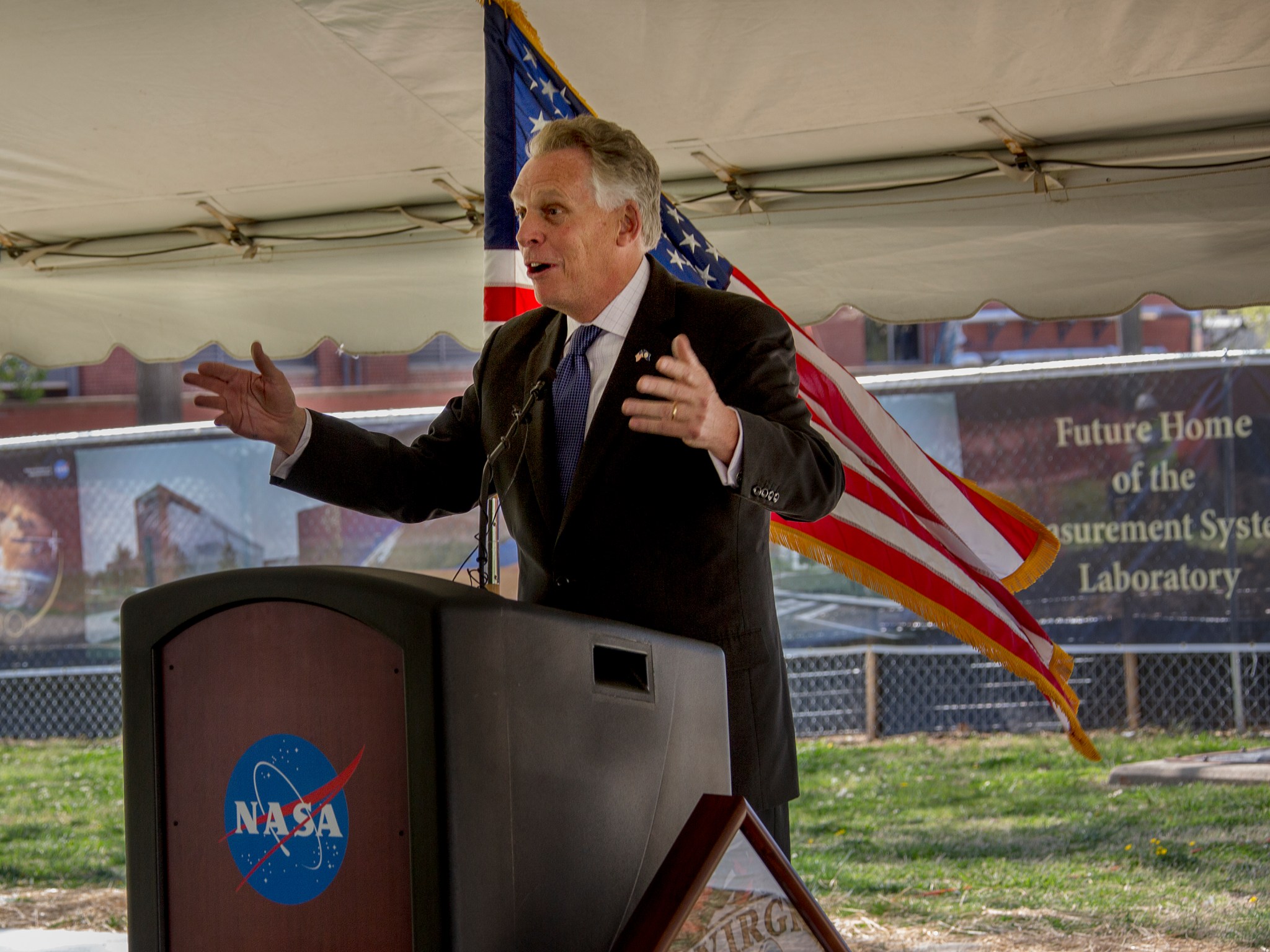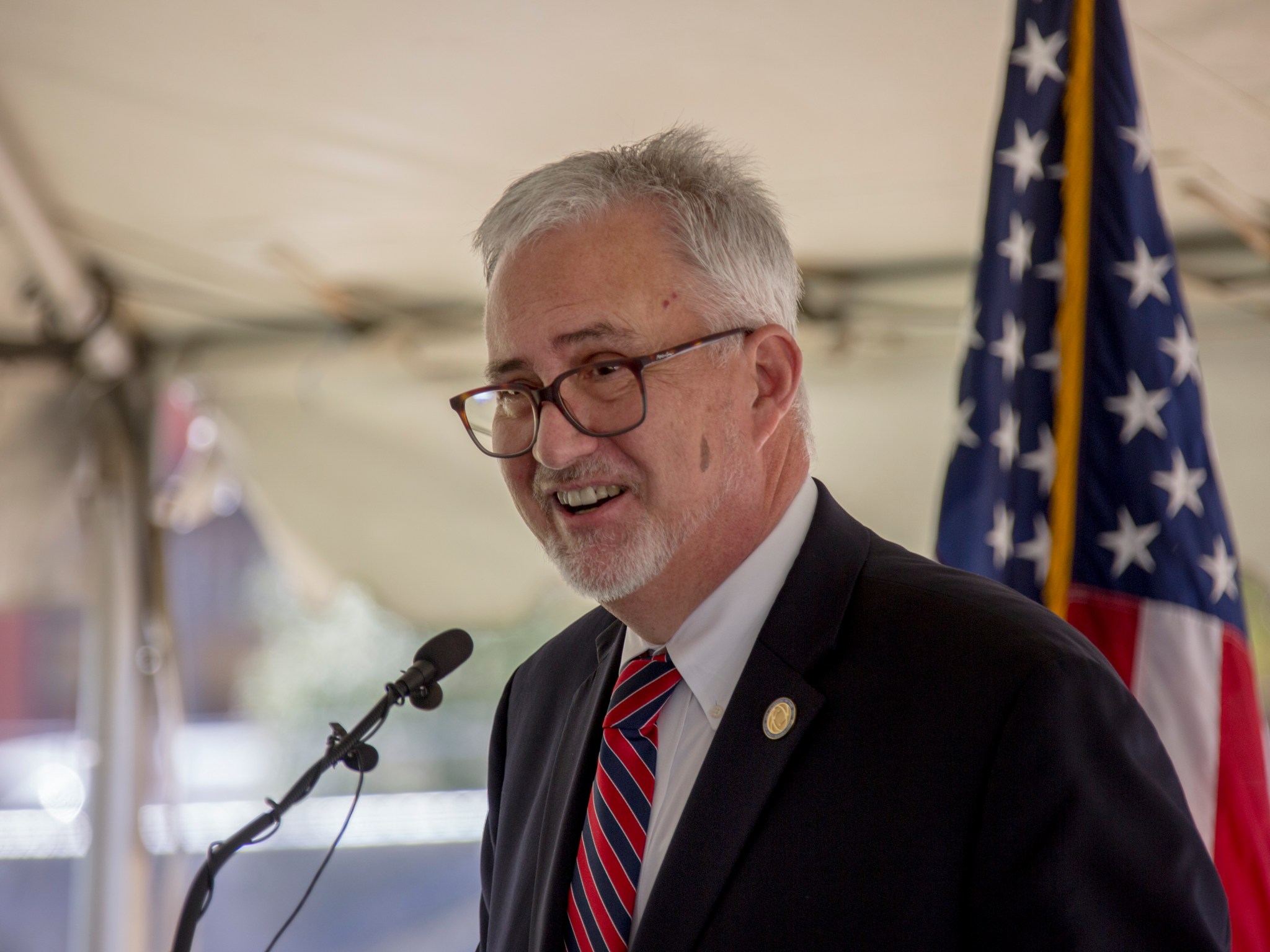Thanks to a $95.6-million project at NASA’s Langley Research Center in Hampton, Virginia, the agency will soon have a gleaming new lab where it will hatch sensing technologies to aid space exploration, improve uncrewed flight and study Earth’s atmosphere.
“It really is spectacular what NASA Langley is doing,” said Virginia Gov. Terry McAuliffe, who visited the center Tuesday to help break ground on its 175,000-square-foot Measurement Systems Laboratory. “This is what we call the new Virginia economy.”
Besides the governor, leaders including U.S. Senator Mark Warner, U.S. Rep. Bobby Scott and Hampton Mayor Donnie Tuck visited NASA Langley to be part of the ceremony and proclaim the importance of technology to the state and local economies.
“This is a very important moment in the long history of NASA Langley,” Warner said. “We are celebrating today NASA, which is a great American institution of science.”
U.S. Rep. Scott commended the center’s drive to innovate and create cutting-edge facilities.
“The revitalization that’s taken place here at NASA Langley is remarkable. It will allow the center to more efficiently lead the way at NASA for another 100 years,” Scott said in a nod to Langley’s 100th anniversary this year.
Scheduled to open in 2019, the Measurement Systems Laboratory will be a world-class facility devoted to research and development of measurement concepts, technologies and systems. The ideas and hardware that emerge from the lab will support many of NASA’s missions, in science, aeronautics and space exploration. “Providing solutions from concept to flight,” is a slogan attached to the new facility.
The lab is to be the largest of all planned new facilities envisioned in NASA Langley’s 20-year revitalization plan. Nesting inside it will be some 40 smaller, modular labs used for work with electronics, lasers, clean rooms and instrumentation. Those mini-labs will allow NASA Langley to consolidate and eliminate some 75,000 square feet (6,968 square meters) of outdated facilities.
About 275 employees will work at the four-story facility.
In the area of space exploration, the new lab will help NASA improve systems related to atmospheric entry aerodynamics. Sensors that measure aerodynamic flow and heating around space vehicles will gather information that will improve landing systems. Other work at the lab will help NASA vehicles find safe landing spots by creating 3-D maps of surface terrain.
To help with NASA’s aeronautics work, the new lab will give researchers tools they need to develop sensors intended to increase safety of air travel and make uncrewed aircraft systems — also known as drones — more useful and safe.
For NASA’s science missions, the new lab will offer a place to refine and improve ideas and technologies that help NASA monitor trends in Earth’s climate and measure pollution and other particles in the atmosphere.
The contract to build the lab was awarded to W. M. Jordan Co. of Newport News, Virginia, in December.
The lab is to be the fourth new building constructed under the center’s revitalization plan. A new headquarters building, which opened in 2011, was the first large office building added at Langley in 35 years. The center’s 138,000-square-foot (12,821-square-meter) Integrated Engineering Services Building opened in 2014. The Katherine G. Johnson Computational Research Facility is nearing completion and is expected to open later this year.
But as a laboratory for research and development of new technologies, the Measurement Systems Laboratory promises to enhance the center’s core mission.
“This is our signature laboratory building,” Center Director Dave Bowles said. “This building will serve as a factory for those new ideas that will drive us toward mission success, the same ideas that will help fuel our nation’s economy.
“This new laboratory means we are poised to make essential contributions to NASA missions for years to come.”
Also, speaking at the groundbreaking ceremony were Michael Daniels, vice president of W.M. Jordan Co., and Timothy Horne, acting administrator for the U.S. General Services Administration, which has collaborated with NASA on the project.
- To see more images from the day’s events, visit this photo gallery.































